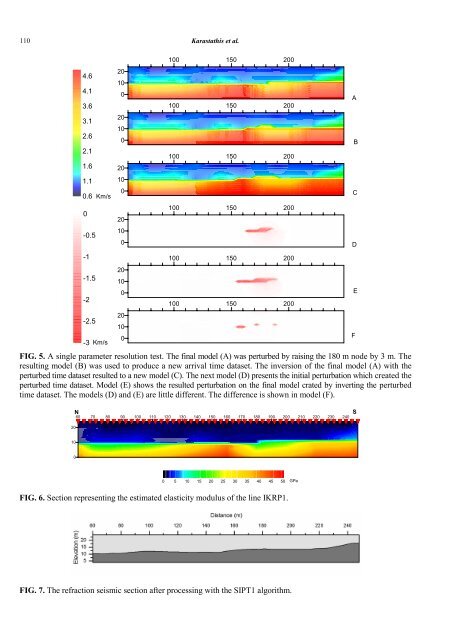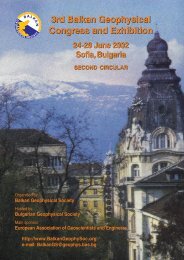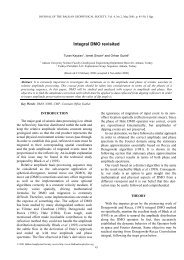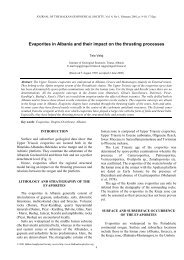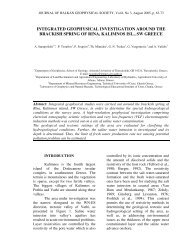Application of inverse ray-tracing seismic modelling techniques
Application of inverse ray-tracing seismic modelling techniques
Application of inverse ray-tracing seismic modelling techniques
Create successful ePaper yourself
Turn your PDF publications into a flip-book with our unique Google optimized e-Paper software.
110 Karastathis et al.<br />
4.6<br />
4.1<br />
3.6<br />
3.1<br />
2.6<br />
2.1<br />
1.6<br />
1.1<br />
0.6<br />
0<br />
-0.5<br />
-1<br />
-1.5<br />
-2<br />
-2.5<br />
Km/s<br />
-3 Km/s<br />
20<br />
10<br />
0<br />
20<br />
10<br />
0<br />
20<br />
10<br />
0<br />
20<br />
10<br />
0<br />
20<br />
10<br />
0<br />
20<br />
10<br />
0<br />
100 150 200<br />
100 150 200<br />
100 150 200<br />
100 150 200<br />
100 150 200<br />
100 150 200<br />
FIG. 5. A single parameter resolution test. The final model (A) was perturbed by raising the 180 m node by 3 m. The<br />
resulting model (B) was used to produce a new arrival time dataset. The inversion <strong>of</strong> the final model (A) with the<br />
perturbed time dataset resulted to a new model (C). The next model (D) presents the initial perturbation which created the<br />
perturbed time dataset. Model (E) shows the resulted perturbation on the final model crated by inverting the perturbed<br />
time dataset. The models (D) and (E) are little different. The difference is shown in model (F).<br />
A<br />
B<br />
C<br />
D<br />
E<br />
F<br />
N<br />
60 70 80 90 100 110 120 130 140 150 160 170 180 190 200 210 220 230 240<br />
S<br />
20<br />
10<br />
0<br />
0 5 10 15 20 25 30 35 40 45 50<br />
GPa<br />
FIG. 6. Section representing the estimated elasticity modulus <strong>of</strong> the line IKRP1.<br />
FIG. 7. The refraction <strong>seismic</strong> section after processing with the SIPT1 algorithm.


